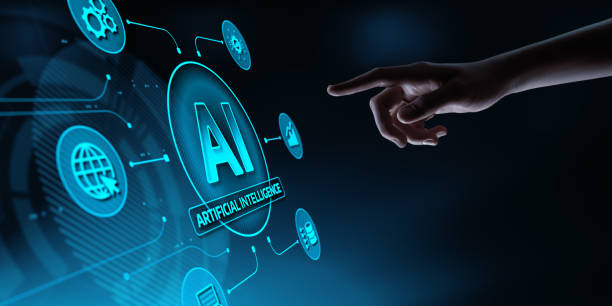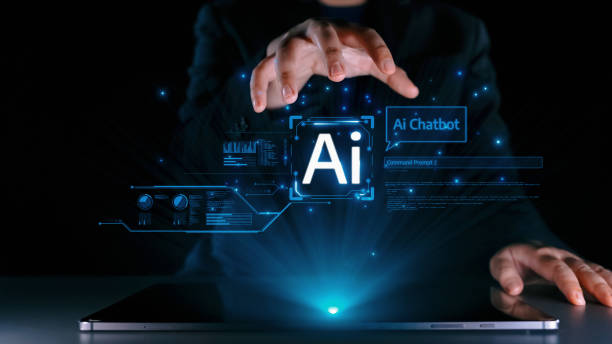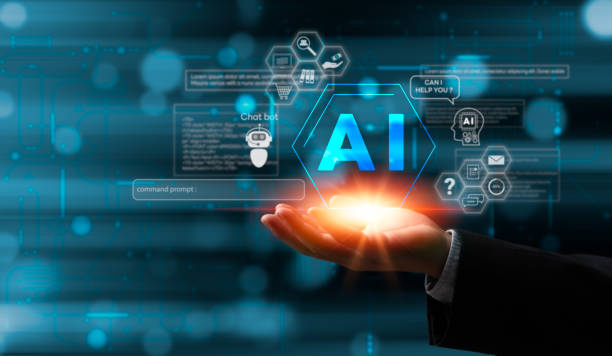What is Artificial Intelligence? Definition, History, and Key Concepts

What is Artificial Intelligence? Definition, History, and Key Concepts
#Artificial_Intelligence (AI) is a branch of computer science that deals with building machines capable of performing tasks that typically require human intelligence.
These tasks include learning, problem-solving, decision-making, natural language understanding, and pattern recognition.
Simply put, AI strives to simulate human cognitive abilities in machines.
The history of AI dates back to the 1950s when scientists like Alan Turing and John McCarthy began exploring the possibility of building thinking machines.
The Dartmouth Conference in 1956 is considered a turning point in AI history, as it was there that the term was officially coined and the main research areas in this field were defined.
Over the subsequent decades, AI faced periods of both hope and disappointment, but recent advancements in hardware and algorithms have led to significant breakthroughs in this field.
Key concepts in AI include Machine Learning, Deep Learning, Neural Networks, Natural Language Processing, and Computer Vision.
Machine learning enables machines to learn from data without explicit programming.
Deep learning is a subset of machine learning that uses deep neural networks to analyze data.
Natural language processing allows machines to understand and generate human language.
Computer vision enables machines to understand and interpret images.
AI Wikipedia
Losing potential customers due to an unprofessional website? Rasaweb is your answer! With our specialized corporate website design services:
✅ Enhance your business’s credibility and standing
✅ Attract more targeted customers
⚡ Act now to receive a free consultation!
Types of Artificial Intelligence: Approaches and Categories

Types of Artificial Intelligence: Approaches and Categories
Artificial intelligence can be divided into various categories based on capabilities and approaches.
Based on capabilities, AI can be broadly divided into two categories
Narrow AI: This type of AI is designed to perform a specific task and performs similarly to or better than humans within that limited scope.
Most of today’s AI systems fall into this category.
For example, facial recognition systems, voice assistants, and movie and music recommendation systems are examples of narrow AI.
General AI: This type of AI has the ability to perform any task that a human can.
General AI is still in theoretical stages and has not yet been fully realized.
Achieving general AI is one of the ambitious goals of researchers in this field.
Based on approaches, AI can be divided into the following categories
Machine Learning: This approach is based on training machines through data.
Machines learn patterns and relationships by analyzing data and use this knowledge for prediction and decision-making.
Deep Learning: This approach is a subset of machine learning that uses deep neural networks to analyze data.
Deep neural networks have a complex structure consisting of multiple layers of artificial neurons.
This structure enables machines to identify complex patterns in data.
Knowledge-Based Systems: This approach is based on storing knowledge and rules in a system.
Knowledge-based systems use this knowledge and rules for problem-solving and decision-making.
Practical Applications of Artificial Intelligence in Various Industries
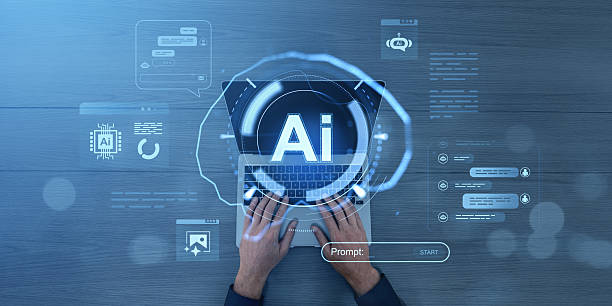
Practical Applications of #Artificial_Intelligence in Various Industries
Artificial Intelligence (AI) currently has widespread applications across various industries and is significantly changing how tasks are performed.
Here, we point out some of the most important applications of AI in various industries:
Healthcare:
- Disease Diagnosis: AI systems can help diagnose diseases more accurately and quickly by analyzing medical images, genetic data, and patient records.
- Drug Development: AI can accelerate and improve the efficiency of drug discovery and development by analyzing clinical data and predicting drug efficacy.
- Surgical Robotics: AI-powered robots can perform complex surgeries with greater precision and delicacy.
Finance and Banking:
- Fraud Detection: AI systems can identify suspicious patterns by analyzing financial transactions and prevent fraud.
- Financial Advisory: Robo-advisors can guide clients on investment and financial management.
- Risk Assessment: AI can assess customer credit risk with greater accuracy.
Manufacturing:
- Automation: Industrial robots equipped with AI can automatically manage production lines.
- Quality Control: Machine vision systems can automatically inspect products and identify defects.
- Process Optimization: AI can optimize processes and increase efficiency by analyzing production data.
Transportation:
- Autonomous Vehicles: Self-driving cars equipped with AI can navigate roads without the need for a human driver.
- Route Optimization: AI systems can select the best routes for transporting goods and people.
- Traffic Management: AI can manage traffic flow and prevent congestion by analyzing traffic data.
| Industry | AI Application |
|---|---|
| Healthcare | Disease Diagnosis, Drug Development |
| Finance | Fraud Detection, Financial Advisory |
| Manufacturing | Automation, Quality Control |
| Transportation | Autonomous Vehicles, Route Optimization |
Machine Learning and Its Role in AI Development
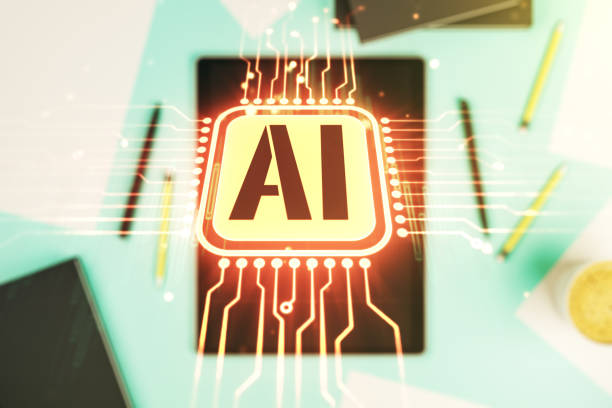
Machine Learning and Its Role in #Artificial_Intelligence Development
Machine Learning is one of the most important subfields of Artificial Intelligence (AI) and plays a fundamental role in the development and advancement of this domain.
Machine learning enables machines to learn from data without explicit programming and improve their performance.
In fact, instead of programmers manually defining rules and instructions for machines, machine learning algorithms allow machines to extract these rules and patterns from data themselves.
Machine Learning Article
In machine learning, machines analyze data using various algorithms and identify patterns and relationships within them.
These patterns and relationships are then used for prediction, decision-making, and other tasks.
There are different types of machine learning algorithms, including supervised learning, unsupervised learning, and reinforcement learning.
Supervised Learning: In this type of learning, the machine is trained using labeled data.
Labeled data includes desired inputs and outputs.
By analyzing this data, the machine attempts to create a model that can predict outputs based on inputs.
Unsupervised Learning: In this type of learning, the machine is trained using unlabeled data.
By analyzing this data, the machine attempts to identify hidden patterns and structures within them.
Reinforcement Learning: In this type of learning, the machine learns how to optimize a specific goal by interacting with an environment.
By performing various actions in the environment and receiving rewards or penalties, the machine learns which actions lead to rewards and which lead to penalties.
Does your current e-commerce site design lead to lost customers and sales?
Rasaweb is your solution with modern and user-friendly e-commerce website designs!
✅ Significant increase in conversion rates and sales
✅ Strong branding and building customer trust
⚡ Get a free e-commerce website design consultation from Rasaweb!
The Future of Artificial Intelligence: Opportunities and Challenges
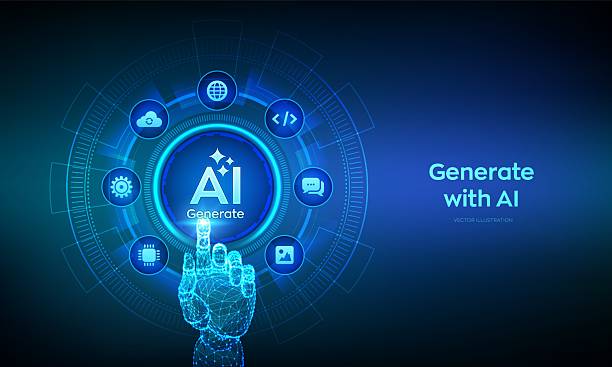
The Future of Artificial Intelligence: Opportunities and Challenges
The future of Artificial Intelligence (AI) is full of exciting opportunities and challenges.
Recent advancements in this field indicate that AI has immense potential to change our lives in various dimensions.
However, potential challenges must also be considered, and solutions for them provided.
Opportunities:
- Increased Productivity: AI can boost productivity across various industries by automating processes, optimizing resources, and accelerating task completion.
- Improved Quality of Life: AI can enhance the quality of life by providing better services in healthcare, education, transportation, and other areas.
- Creation of New Job Opportunities: AI can generate new job opportunities by creating new industries and increasing the demand for specialists in this field.
- Solving Complex Problems: AI can help solve complex problems such as climate change, incurable diseases, and global poverty.
Challenges:
- Unemployment: Automation of processes using AI may lead to job displacement.
- Bias: AI algorithms may be trained on biased data, leading to discriminatory decisions.
- Privacy: The collection and use of personal data by AI systems may lead to privacy violations.
- Security: AI systems may be vulnerable to cyberattacks and used for malicious purposes.
- Ethical Issues: The use of AI in sensitive areas such as warfare and surveillance may raise serious ethical concerns.
An Overview of Key Algorithms in Artificial Intelligence

An Overview of Key Algorithms in #Artificial_Intelligence
Artificial Intelligence (AI) is built upon various algorithms, each designed to solve specific problems.
Understanding these algorithms is essential for a deeper comprehension of how AI systems work.
In this section, we refer to some of the key algorithms in AI:
Machine Learning Algorithms:
- Linear Regression: Used to predict a continuous value based on one or more independent variables.
- Logistic Regression: Used to predict a discrete (binary) value based on one or more independent variables.
- Decision Tree: Used to classify or predict a value based on a series of decision rules.
- Support Vector Machine: Used for classifying data by finding the optimal hyperplane that separates data into two or more categories.
- Neural Networks: Inspired by the structure of the human brain, they are used for learning complex patterns in data.
Search Algorithms:
- Breadth-First Search: Used to find the shortest path in a graph.
- Depth-First Search: Used for a deep search of a graph.
- A* Search: Used to find the shortest path in a graph using a heuristic function.
Optimization Algorithms:
- Gradient Descent: Used to find the minimum of a function.
- Genetic Algorithm: Uses principles of evolution to find the best solution for a problem.
The Impact of Artificial Intelligence on the Job Market and Economy
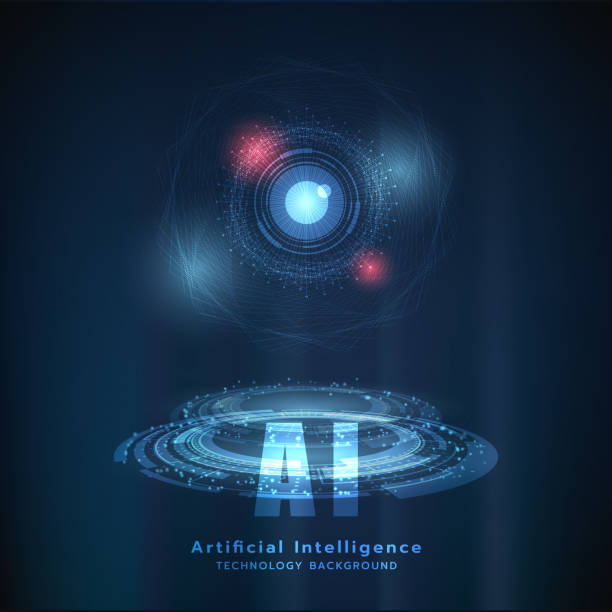
The Impact of Artificial Intelligence on the Job Market and Economy
Artificial Intelligence (AI) has significant impacts on the global job market and economy.
These impacts can be both positive and negative, and understanding them is crucial for policymakers, employers, and employees.
Positive Impacts:
- Increased Productivity: AI can boost productivity across various industries by automating processes, optimizing resources, and accelerating task completion.
This increase in productivity can lead to economic growth. - Creation of New Job Opportunities: AI can generate new job opportunities by creating new industries and increasing the demand for specialists in this field.
- Cost Reduction: AI can reduce costs by minimizing human errors, improving process efficiency, and decreasing the need for human labor.
- Improved Product and Service Quality: AI can help improve the quality of products and services by analyzing data and providing valuable insights.
Negative Impacts:
- Unemployment: Automation of processes using AI may lead to job displacement.
This can result in an increase in unemployment rates and economic inequality. - Need for New Skills: As AI advances, the demand for new skills in the job market increases.
Individuals who do not possess the required skills may face difficulties in finding employment. - Increased Economic Inequality: The benefits derived from AI may be unevenly distributed, leading to an increase in economic inequality.
| Impact | Description |
|---|---|
| Increased Productivity | Process automation, resource optimization |
| Job Creation | New industries, demand for specialists |
| Unemployment | Process automation, job displacement |
| Need for New Skills | Increased demand for specialized skills |
Ethical Challenges of Artificial Intelligence and Solutions to Address Them
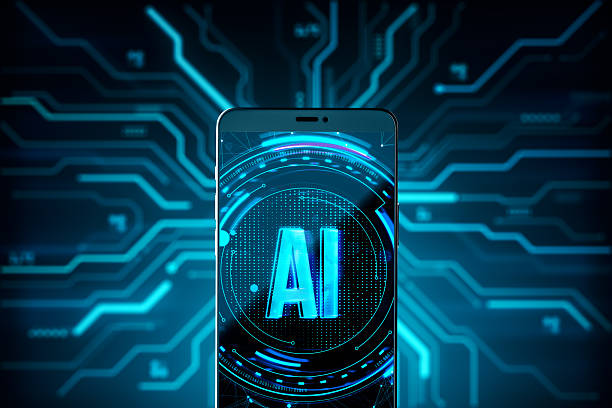
Ethical Challenges of Artificial Intelligence and Solutions to Address Them
Despite its vast potential, Artificial Intelligence (AI) also brings numerous ethical challenges.
These challenges must be seriously considered, and solutions provided to prevent the misuse of AI and ensure its benefits are distributed fairly.
Here, we point out some of the most important ethical challenges of AI and the solutions to address them:
Bias: AI algorithms may be trained on biased data, leading to discriminatory decisions.
For example, a facial recognition system might have lower accuracy in identifying individuals with darker skin tones.
Solution: Collecting diverse and representative data, using unbiased algorithms, and monitoring the performance of AI systems to identify and rectify bias.
Privacy: The collection and use of personal data by AI systems may lead to privacy violations.
For example, a product recommendation system might collect a lot of information about individuals’ personal tastes and interests.
Solution: Transparency regarding data collection and use, obtaining informed consent from individuals, employing privacy-preserving techniques, and limiting access to personal data.
Accountability: If an AI system makes a wrong decision, determining who is responsible is difficult.
For example, if an autonomous vehicle causes an accident, is the driver, the car manufacturer, or the AI system developer responsible? Solution: Establishing clear laws and regulations regarding the accountability of AI systems, and developing systems that can explain their decisions (explainable AI).
Do you have an e-commerce site, but your sales aren’t what you expected? Rasaweb solves your problem forever with professional e-commerce website designs!
✅ Significant increase in conversion rates and sales
✅ Unparalleled user experience for your customers
⚡ Click to get a free consultation with Rasaweb!
Techniques for Increasing Accuracy and Reliability in AI Systems
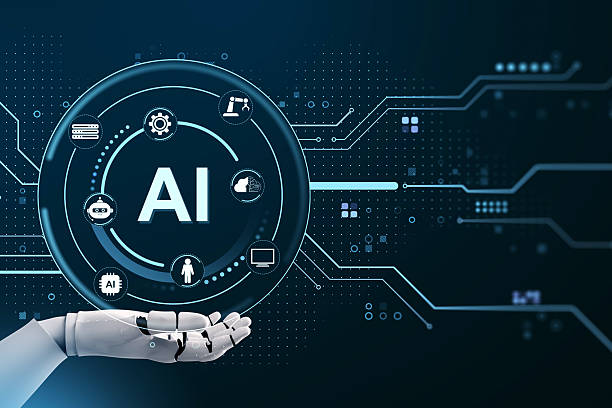
Techniques for Increasing Accuracy and Reliability in #Artificial_Intelligence Systems
Accuracy and reliability are two crucial factors in the design and implementation of Artificial Intelligence (AI) systems.
AI systems must be able to make correct and reliable decisions to be effectively utilized in various applications.
Here, we point out some techniques for increasing the accuracy and reliability of AI systems:
High-Quality Data Collection: The quality of training data directly impacts the accuracy of AI systems.
Training data should be diverse, representative, and error-free.
Solution: Using reliable data sources, data cleaning, and increasing data diversity.
Selecting the Right Algorithm: Different AI algorithms are suitable for solving different problems.
Choosing the appropriate algorithm greatly impacts the system’s accuracy and efficiency.
Solution: Reviewing and comparing various algorithms, and selecting the one that offers the best performance for the problem at hand.
Algorithm Parameter Tuning: Many AI algorithms have parameters that need to be correctly adjusted.
Incorrect parameter tuning can lead to a reduction in system accuracy and efficiency.
Solution: Using parameter optimization techniques, such as grid search and random search.
Model Validation: After training an AI model, its performance must be evaluated using test data.
This helps identify potential issues in the model.
Solution: Using cross-validation techniques, and examining various metrics such as accuracy, precision, recall, and F1-score.
Tools and Frameworks for Artificial Intelligence Development
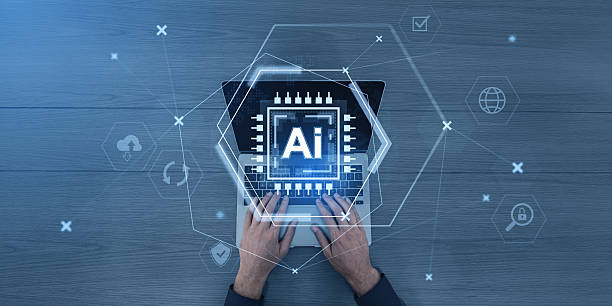
Tools and Frameworks for #Artificial_Intelligence Development
Artificial Intelligence (AI) development requires various tools and frameworks that help developers create AI systems more efficiently and effectively.
These tools and frameworks provide various functionalities such as data management, model training, performance evaluation, and system deployment.
Here, we point out some of the most important tools and frameworks for AI development:
TensorFlow: An open-source machine learning framework developed by Google.
TensorFlow supports various programming languages like Python, C++, and Java, and is used for developing a wide range of AI systems, including image recognition, natural language processing, and robotics systems.
TensorFlow
PyTorch: An open-source machine learning framework developed by Facebook.
PyTorch is highly popular among researchers and developers due to its flexibility and ease of use.
PyTorch supports the Python programming language and is used for developing deep learning systems.
Keras: A high-level API for building neural networks that can work with TensorFlow, Theano, and CNTK.
Keras is highly suitable for beginners due to its simplicity and ease of use.
Scikit-learn: A Python library that includes various machine learning algorithms, such as regression, classification, and clustering.
Scikit-learn is highly suitable for developing traditional machine learning systems.
Frequently Asked Questions
| Question | Answer |
|---|---|
| What is the definition of Artificial Intelligence (AI)? | It is a field in computer science that aims to create intelligent machines capable of thinking, learning, problem-solving, and decision-making like humans. |
| Mention some common applications of Artificial Intelligence. | These include self-driving cars, voice assistants (like Siri and Alexa), recommendation systems (like Netflix and Amazon), facial recognition, and medical diagnosis. |
| What is the difference between Narrow AI (ANI) and General AI (AGI)? | Narrow AI is specialized in one specific task, while General AI possesses human-level intellectual ability to perform any cognitive task. |
| What is Machine Learning and its relationship to Artificial Intelligence? | Machine Learning is a branch of Artificial Intelligence that focuses on developing algorithms allowing systems to learn from data without explicit programming. |
| What are Artificial Neural Networks? | They are computational models inspired by the structure and function of the human brain, used in deep learning to process data and discover complex patterns. |
| Mention some ethical challenges related to Artificial Intelligence. | These include issues of privacy, bias in data and algorithms, job displacement, and accountability in case of errors or unfair decisions. |
| What is Natural Language Processing (NLP)? | It is a branch of Artificial Intelligence that focuses on enabling computers to understand, interpret, and generate human language in a useful and interactive way. |
| How can Artificial Intelligence affect the job market? | It can lead to the automation of some routine tasks, requiring retraining of workers and creating new jobs in the areas of designing, developing, and maintaining AI systems. |
| What is Computer Vision? | It is a field in Artificial Intelligence that enables computers to “see” and understand and interpret images and videos in the same way humans do, allowing them to recognize objects and faces. |
| What is the importance of data in developing Artificial Intelligence systems? | Data is the fuel that powers AI systems, especially in machine learning. The quality and quantity of data significantly affect the accuracy and performance of models and their ability to learn and make correct decisions. |
And other advertising services by Rasaweb Advertising Agency
- Smart Advertising Campaign: A fast and efficient solution for user engagement, focusing on intelligent data analysis.
- Smart Link Building: An effective tool to boost sales with the help of attractive UI design.
- Smart Digital Branding: Professional optimization to increase click-through rates by customizing user experience.
- Smart Brand Identity: A fast and efficient solution to improve SEO ranking with a focus on marketing automation.
- Smart Sales Automation: An effective tool to increase click-through rates by using real data.
And hundreds of other services in the field of internet advertising, advertising consulting, and organizational solutions
Internet Advertising | Advertising Strategy | Advertorials
Resources
AI on Zoomit AI articles on Digikala Mag AI news on IRNA AI news on ISNA
? To elevate your business in the digital world, Rasaweb Afarin Digital Marketing Agency paves your path to success by offering innovative solutions including custom website design, professional SEO, and targeted advertising campaigns. Join us for a powerful presence in the online market.
📍 Tehran, Mirdamad Street, next to the Central Bank, South Kazeroon Alley, Ramin Alley, No. 6

